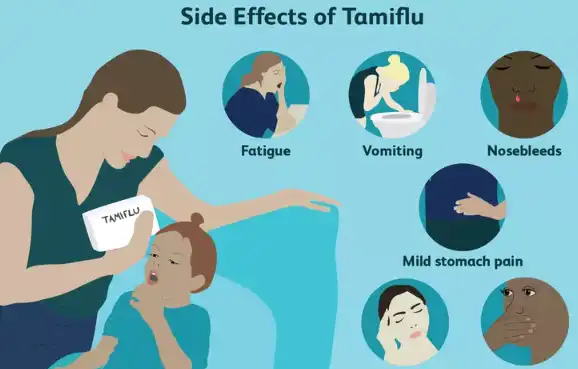Oseltamivir, commonly known by its brand name Tamiflu, is a widely used antiviral medication designed to combat influenza viruses. As a neuraminidase inhibitor, Oseltamivir works by interfering with the spread of the influenza virus within the body. This medication has gained significant attention, especially during flu seasons and pandemic outbreaks, due to its effectiveness in both treating and preventing influenza infections. Understanding how Oseltamivir functions is crucial for appreciating its role in managing flu symptoms and reducing the severity and duration of the illness.
What are the key differences between Oseltamivir and other antiviral medications?
Oseltamivir stands out among antiviral medications due to its specific mechanism of action and targeted approach to combating influenza viruses. Unlike broad-spectrum antivirals that may affect various types of viruses, Oseltamivir is particularly effective against influenza A and B viruses, which are the primary causes of seasonal flu outbreaks.

One of the key differences lies in Oseltamivir's mode of action. While many antivirals work by preventing viral entry into cells or inhibiting viral replication within cells, Oseltamivir targets a specific enzyme called neuraminidase. This enzyme is crucial for the release of newly formed virus particles from infected cells. By inhibiting neuraminidase, Oseltamivir effectively traps the virus within infected cells, preventing it from spreading to other cells in the body.
Another distinguishing feature of Oseltamivir is its bioavailability and ease of administration. Unlike some antiviral medications that require intravenous administration, Oseltamivir can be taken orally in the form of capsules or liquid suspension. This oral formulation allows for convenient at-home treatment and prophylaxis, making it more accessible to a broader population during flu outbreaks.
Furthermore, Oseltamivir has demonstrated effectiveness in both treatment and prevention of influenza. When used as a treatment, it can significantly reduce the duration and severity of flu symptoms if taken within 48 hours of symptom onset. As a preventive measure, it can be prescribed to individuals who have been exposed to the flu virus, reducing their chances of developing the illness.
Oseltamivir also differs from other antivirals in its specificity to influenza viruses. While some antivirals may have broader antiviral activity, Oseltamivir's targeted approach means it has fewer interactions with other medications and potentially fewer side effects compared to broader-spectrum antivirals. This specificity also contributes to its effectiveness against resistant strains of influenza that may have developed resistance to other antiviral medications.
How quickly does Oseltamivir start working to reduce flu symptoms?
The speed at which Oseltamivir begins to work is a crucial factor in its effectiveness against influenza. When taken as directed, Oseltamivir can start to combat the virus relatively quickly, but the timeline for symptom relief can vary among individuals.
Typically, patients may begin to notice a reduction in flu symptoms within 24 to 48 hours after starting Oseltamivir treatment. However, it's important to note that the medication works most effectively when started as soon as possible after symptom onset, ideally within the first 48 hours. This early intervention allows Oseltamivir to inhibit viral replication before the virus has had a chance to spread extensively throughout the body.
The rapid action of Oseltamivir is due to its efficient absorption and distribution in the body. After oral administration, the drug is quickly absorbed from the gastrointestinal tract and converted to its active form in the liver. This active metabolite then circulates throughout the body, reaching sites of viral infection where it can begin its work of inhibiting neuraminidase enzymes.
While some patients may experience noticeable symptom relief within the first day or two of treatment, the full benefits of Oseltamivir typically manifest over the course of the treatment period, which is usually five days for standard flu cases. During this time, the medication continues to suppress viral replication, gradually reducing the viral load in the body and allowing the immune system to more effectively combat the infection.
It's worth noting that the speed and extent of symptom relief can be influenced by various factors, including the individual's overall health, the timing of treatment initiation, and the specific strain of influenza virus involved. Some patients may experience more rapid improvement, while others might see a more gradual reduction in symptoms over the course of treatment.
To maximize the effectiveness and speed of Oseltamivir's action, it's crucial for patients to start treatment as soon as possible after symptom onset and to complete the full course of medication as prescribed. This approach not only helps in faster symptom relief but also reduces the risk of complications and shortens the overall duration of the illness.
Can Oseltamivir be used for prevention as well as treatment of influenza?
Oseltamivir's versatility extends beyond just treating active influenza infections; it also plays a significant role in prevention. This dual capability makes it a valuable tool in managing influenza outbreaks and protecting high-risk individuals from contracting the virus.

When used for prevention, Oseltamivir is typically prescribed as a prophylactic measure in specific situations. These may include scenarios where an individual has been exposed to someone with confirmed influenza, or during outbreaks in closed communities such as nursing homes or other institutional settings. The preventive use of Oseltamivir can significantly reduce the risk of developing influenza in these high-risk situations.
The preventive efficacy of Oseltamivir has been demonstrated in various clinical studies. When used as post-exposure prophylaxis, it can reduce the likelihood of developing symptomatic influenza by up to 90% in household contacts of infected individuals. This high level of effectiveness makes it an important strategy for containing the spread of influenza, especially among vulnerable populations.
For seasonal prevention, Oseltamivir may be prescribed to individuals at high risk of complications from influenza, such as the elderly, those with chronic health conditions, or immunocompromised individuals. In these cases, the medication is typically taken daily throughout the flu season, providing ongoing protection against infection.
It's important to note that while Oseltamivir is effective for prevention, it should not be considered a substitute for annual influenza vaccination. The Centers for Disease Control and Prevention (CDC) and other health authorities still recommend annual flu shots as the primary method of influenza prevention. Oseltamivir serves as an additional layer of protection, especially for those who may not respond well to vaccines or in situations where vaccination is not possible or has not been effective.
When used for prevention, the dosing regimen of Oseltamivir differs from its use in treatment. Typically, a lower dose is prescribed for preventive use, and the duration can vary depending on the specific situation. For post-exposure prophylaxis, a 10-day course is often recommended, while seasonal prophylaxis may continue throughout the flu season.
The preventive use of Oseltamivir underscores its importance in comprehensive influenza management strategies. By offering both treatment and prevention options, Oseltamivir provides healthcare providers with flexible tools to combat influenza outbreaks and protect vulnerable populations. This dual capability, combined with its generally good safety profile and ease of administration, makes Oseltamivir a crucial component in the arsenal against seasonal and pandemic influenza.
Conclusion
Oseltamivir's mechanism of action as a neuraminidase inhibitor makes it a potent and specific antiviral medication for influenza. Its ability to both treat and prevent influenza infections, coupled with its rapid onset of action and convenient oral administration, positions it as a valuable tool in managing flu outbreaks. While it's most effective when started early in the course of infection, Oseltamivir's dual role in treatment and prevention makes it an essential component of influenza management strategies, particularly for high-risk individuals and during severe flu seasons.
If you are also interested in this product and want to know more product details, or want to know about other related products, please feel free to contact sasha_slsbio@aliyun.com.
References
- Centers for Disease Control and Prevention. (2021). Influenza Antiviral Medications: Summary for Clinicians.
- World Health Organization. (2018). WHO Guidelines for Pharmacological Management of Pandemic Influenza A(H1N1) 2009 and Other Influenza Viruses.
- Jefferson T, et al. (2014). Neuraminidase inhibitors for preventing and treating influenza in adults and children. Cochrane Database Syst Rev.
- Dobson J, et al. (2015). Oseltamivir treatment for influenza in adults: a meta-analysis of randomised controlled trials. The Lancet.
- Hurt AC, et al. (2012). Antiviral resistance during the 2009 influenza A H1N1 pandemic: public health, laboratory, and clinical perspectives. Lancet Infect Dis.
- Fiore AE, et al. (2011). Antiviral agents for the treatment and chemoprophylaxis of influenza --- recommendations of the Advisory Committee on Immunization Practices (ACIP). MMWR Recomm Rep.
- Hayden FG, et al. (2018). Baloxavir Marboxil for Uncomplicated Influenza in Adults and Adolescents. N Engl J Med.
- Ison MG. (2015). Antiviral Treatments. Clin Chest Med.
- Ng KE. (2019). Xofluza (Baloxavir Marboxil) for the Treatment of Acute Uncomplicated Influenza. P T.
- Moscona A. (2005). Neuraminidase inhibitors for influenza. N Engl J Med.

